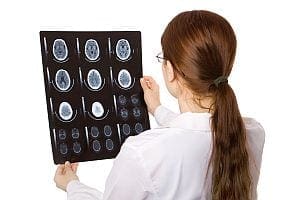statFor some women, it's about making an elegantement at special events or being a couple…

Concussions and Academic Performance: Introducing the BrainSTEPS Protocol
BrainSTEPS Protocol
A concussion can be either a mild injury or one with long-standing consequences. Sometimes the symptoms go away quickly, sometimes they return, and sometimes they linger for years or even get worse. The Centers for Disease Control and Prevention (CDC) defines a concussion as “a type of traumatic brain injury, or TBI, caused by a bump, blow, or jolt to the head that can change the way your brain normally works. Concussions can also occur from a blow to the body that causes the head to move rapidly back and forth. Even a ‘ding,’ ‘getting your bell rung,’ or what seems to be mild bump or blow to the head can be serious.” It must be stressed that although doctors may call a concussion a “mild” brain injury due to the fact that they are not usually life-threatening, all brain injuries are serious and must be treated with great care. This includes the approach taken when a student-athlete returns to the classroom after suffering from the injury.
To help deal with the potential cognitive effects of concussions and prevent further problems that can result when students return to the academic environment, the Pennsylvania Department of Education, the Brain Injury Association of Pennsylvania, and the Pennsylvania Department of Health have joined together to create the BrainSTEPS program. The acronym STEPS stands for Strategies Teaching Educators, Parents & Students. Its aim is to help students from across America recover from concussions.
There is no way to know if the functional injury caused by a concussion will be short- or long-term. The BrainSTEPS “Return to School Protocol” is meant to help shorten the duration of symptoms by eliminating all activity that might exacerbate the injury and its symptoms. This includes ceasing all physical activities during recess, all sports, physical education classes, and similar activities.
First, the local education agency (LEA) creates a two-person concussion management team (CMT). Then one person monitors the student’s academic and behavioral patterns, and the other monitors their symptoms. The team works with teachers, administrators, parents or guardians, and physicians to ensure that everyone is working together toward the child’s recovery.
Part of the protocol advises that, “Accommodations for classwork should be provided until all symptoms resolve. Physical symptoms (e.g., headache, dizziness, light/noise sensitivity) may heal faster than cognitive symptoms (e.g., attention, memory, concentration).” Such accommodations include no classes at the earliest stages. After a return to school, the student should not be required to take notes in the next stage of recovery. At the beginning of the program, the student is interviewed three to five times per week to assess the state of their symptoms. Prepared checklists give the CMT a method for tracking the student’s progress.
Symptoms of concussion can include headache or pressure in the head, nausea, problems with balance, dizziness, lightheadedness, fatigue, drowsiness, blurry vision, sensitivity to light, sensitivity to noise, numbness or tingling, grogginess, fogginess, problems concentrating, difficulty remembering, trouble falling asleep, changes in sleep patterns, heightened emotions, irritability, and feelings of sadness, nervousness, or anxiety.
If symptoms persist beyond the initial four-week, post-concussion monitoring period, then a formal referral to the BrainSTEPS program is recommended to call in the help of its experts.
The non-invasive techniques of a Chiropractic Clinical Neurologist (DACAN or DACNB) may prove beneficial for the recovery of anyone with a concussion, and should be considered as part of any well-rounded treatment plan. To learn more, call or visit our office.





